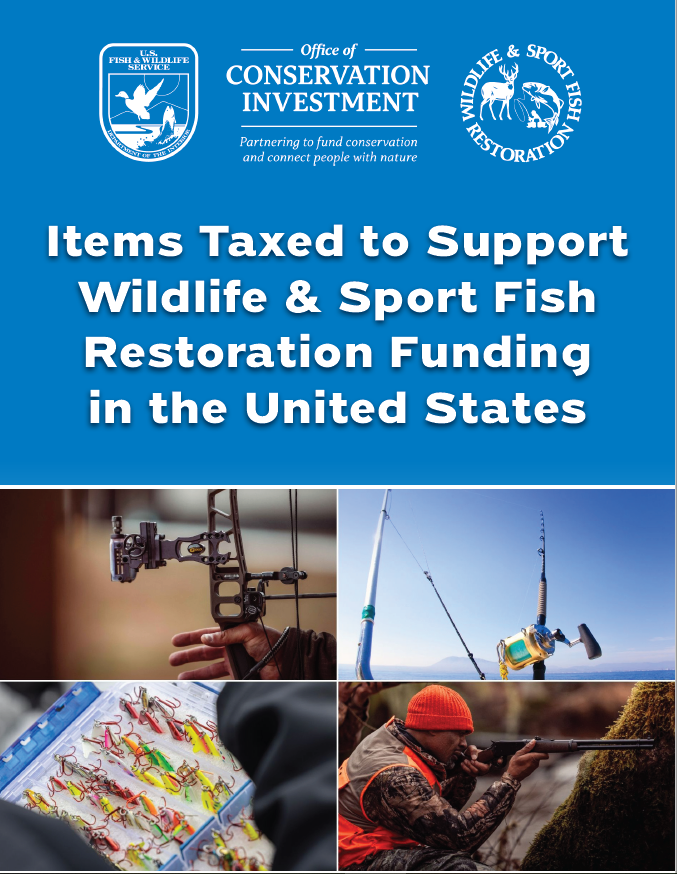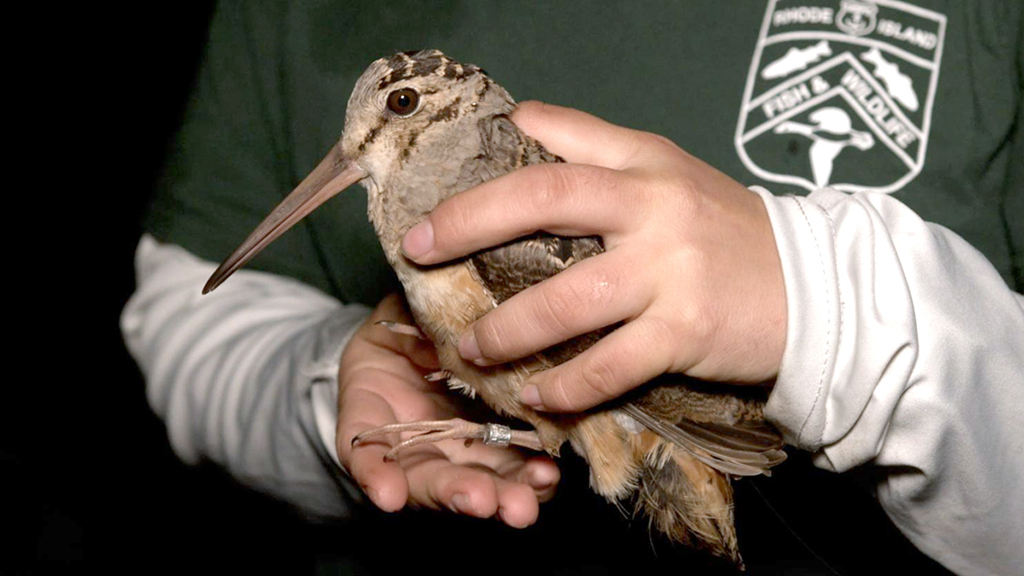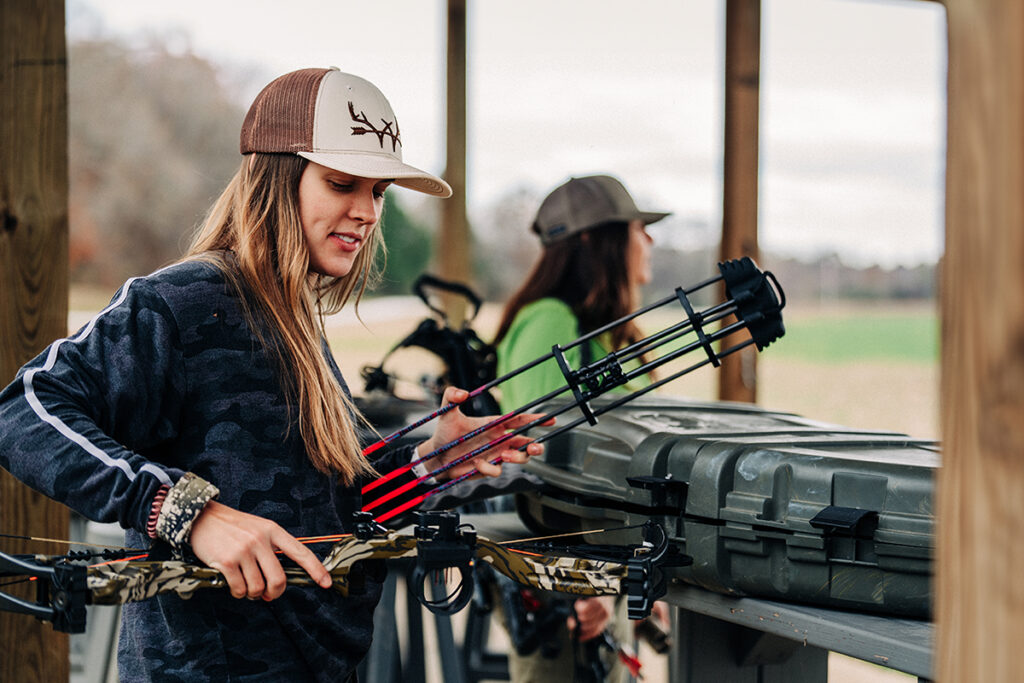Conservation Investment
New Name, Same Purpose
The U.S. Fish and Wildlife Service’s Wildlife and Sport Fish Restoration Program has changed its name to the Office of Conservation Investment. We have expanded from administering the Wildlife Restoration grant program to state fish and wildlife agencies in 1937 to administering over 60 grant programs with a wide range of services to a diversity of state agencies, tribal nations, and NGO and university partners. Fish and Wildlife conservation is by its very nature an investment in the future. As the Office of Conservation Investment, we will continue to support states, tribal nations, landowners, nongovernmental organizations, and industry partners to benefit fish and wildlife and the habitats they call home.
Celebrating 75 Years of Sport Fish Restoration
For 75 years funding distributed through the Sport Fish Restoration Act has delivered public access to America’s waterways, extraordinary angling opportunities, boating safety, fish habitat management, fish management and research, clean water, and improved human health and well-being.

Items Taxed to Support Wildlife & Sport Fish Restoration Funding in the United States
A 20-page illustrative document detailing the specifics of the federal excise taxes that fund the Wildlife Restoration and Sport Fish Restoration programs. Last updated March 2025.
Grant Happenings
The Office of Conservation Investment supports states, tribal nations, landowners, nongovernmental organizations, and industry partners to benefit fish and wildlife and the habitats they call home. Our conservation priorities are fish & wildlife management, research and education.
R3: Recruitment, Retention and Reactivation
R3 encapsulates a core strategy of outdoor organizations to engage individuals in outdoor activities. RECRUITEMENT involves attracting new participants, RETENTION focuses on maintaining the interest of current participants and REACTIVATION aims to re-engage individuals who have previously participated but have become inactive.
Grant Funding at Work
Projects administered through the Multistate Conservation Grant Program which provides $11 million dollars annually from the Wildlife Restoration Account and the Sport Fish Restoration and Boating Trust Fund. This program is jointly administered by the U.S. Fish and Wildlife Service and the Association of Fish and Wildlife Agencies (AFWA).
Sport Fish Conservation in Kentucky
Lead by KDFWR staff and hosted by Pitman Creek Wholesale in Stanford, KY, state agency biologists conduct field work illustrating the importance of Sport Fish Restoration funding that benefits fisheries resources and opportunities.

The Wildlife and Sport Fish Restoration program has funded eight decades of woodcock research, and there’s still more to learn. View this ArcGIS Storymap to see how funding supports woodcock conservation across its range.
Conserving Black Bears in Connecticut with Colt
Colt joined biologists from the Connecticut Department of Energy and Environmental Protection and the U.S. Fish and Wildlife Service’s Wildlife and Sportfish Restoration Program to learn about the black bear conservation.

Together, industry, state and federal partners make conservation happen
Industry federal excise taxes have been crucial to American conservation since 1937, when pressure from conservation groups and the public helped pass the Federal Aid in Wildlife Restoration Act, known as Pittman-Robertson, followed in 1950 by the Federal Aid in Sport Fish Restoration Act, known as Dingell-Johnson. Together, these acts provide more than $1 billion a year to support fish and wildlife.
Since 1937, the federal excise taxes on firearms and ammunition in the Wildlife Restoration Act have been used by state fish and wildlife agencies for public hunting access, hunter education, wildlife research, and new facilities where hunters and shooting athletes can hone their skills.
Since 1950, the federal excise taxes on fishing equipment and motorboat fuel in the Sport Fish Restoration Act have been used by state fish and wildlife agencies for public boating and fishing access, fish hatcheries and stocking programs, water quality monitoring, sport fish research and aquatic education.
Since 1972, the federal excise taxes on archery equipment in the Wildlife Restoration Act have been used by state fish and wildlife agencies for public hunting access, hunter education, wildlife research, and new facilities where archers can hone their skills.
Since 1984, the motorboat fuel tax and federal excise taxes on electric motors, imported yachts, and certain other marine items in the Sport Fish Restoration Act have been used by state fish and wildlife agencies for public boating and fishing access, fish research, aquatic education, pump out stations for recreational boaters and other boating infrastructure.
For more than 80 years, state agencies have worked with the U.S. Fish and Wildlife Service to conserve wildlife and fisheries and connect people with nature. Across the country, state agencies are on the front lines of conservation, and they use Wildlife and Sport Fish Restoration funds as an indispensable part of their budget.
Target Shooting Ranges
Archery, Firearms, or Combined
Wildlife Restoration funds support the construction, operation, and maintenance of over 850 public target ranges in the United States. Explore these ranges with this interactive map.

